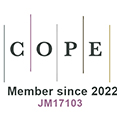REFERENCES
1. Raina P, Gilsing A, Mayhew AJ, Sohel N, van den Heuvel E, Griffith LE. Individual and population level impact of chronic conditions on functional disability in older adults. PLoS ONE 2020;15:e0229160.
2. Wang F, Zhang S, Zhou F, Zhao M, Zhao H. Early physical rehabilitation therapy between 24 and 48 h following acute ischemic stroke onset: a randomized controlled trial. Disabil Rehabil 2022;44:3967-72.
4. Babaiasl M, Mahdioun SH, Jaryani P, Yazdani M. A review of technological and clinical aspects of robot-aided rehabilitation of upper-extremity after stroke. Disabil Rehabil 2016;11:263-80.
5. Li B, Li G, Sun Y, Jiang G, Kong J, Jiang D. A review of rehabilitation robot. In: 2017 32nd Youth Academic Annual Conference of Chinese Association of Automation (YAC); 2017 May 19-21; Hefei, China. IEEE; 2017. pp. 907-11.
6. Hogan N, Krebs HI, Charnnarong J, Srikrishna P, Sharon A. MIT-MANUS: a workstation for manual therapy and training. I. In: Proceedings IEEE International Workshop on Robot and Human Communication; Tokyo, Japan. IEEE; 1992. pp. 161-5.
7. Lum PS, Burgar CG, Van der Loos M, Shor PC, Majmundar M, Yap R. MIME robotic device for upper-limb neurorehabilitation in subacute stroke subjects: a follow-up study. J Rehabil Res Dev 2006;43: 631-42. Available from: https://pubmed.ncbi.nlm.nih.gov/17123204/. [Last accessed on 7 Mar 2024].
8. Lum PS, Burgar CG, Shor PC, Majmundar M, Van der Loos M. Robot-assisted movement training compared with conventional therapy techniques for the rehabilitation of upper-limb motor function after stroke. Arch Phys Med Rehab 2002;83:952-9.
9. Loureiro R, Amirabdollahian F, Topping M, Driessen B, Harwin W. Upper limb robot mediated stroke therapy - GENTLE/s approach. Auton Robot 2003;15:35-51.
10. Maciejasz P, Eschweiler J, Gerlach-Hahn K, Jansen-Troy A, Leonhardt S. A survey on robotic devices for upper limb rehabilitation. J Neuroeng Rehabil 2014;11:3.
11. Klamroth-Marganska V, Blanco J, Campen K, et al. Three-dimensional, task-specific robot therapy of the arm after stroke: a multicentre, parallel-group randomised trial. Lancet Neurol 2014;13:159-66.
12. Nef T, Mihelj M, Colombo G, Riener R. ARMin - robot for rehabilitation of the upper extremities. In: Proceedings 2006 IEEE International Conference on Robotics and Automation; 2006 May 15-19; Orlando, USA. IEEE; 2006. pp. 3152-7.
13. Kim B, Deshpande AD. An upper-body rehabilitation exoskeleton Harmony with an anatomical shoulder mechanism: design, modeling, control, and performance evaluation. Int J Robot Res 2017;36:414-35.
14. Islam MR, Assad-Uz-Zaman M, Brahmi B, Bouteraa Y, Wang I, Rahman MH. Design and development of an upper limb rehabilitative robot with dual functionality. Micromachines 2021;12:870.
15. Huang J, Tu X, He J. Design and evaluation of the RUPERT wearable upper extremity exoskeleton robot for clinical and in-home therapies. IEEE T Syst Man Cybern Syst 2016;46:926-35.
16. Lee HD, Lee BK, Kim WS, Han JS, Shin KS, Han CS. Human-robot cooperation control based on a dynamic model of an upper limb exoskeleton for human power amplification. Mechatronics 2014;24:168-76.
17. Ball SJ, Brown IE, Scott SH. MEDARM: a rehabilitation robot with 5DOF at the shoulder complex. In: 2007 IEEE/ASME International Conference on Advanced Intelligent Mechatronics; 2007 Sep 04-07; Zurich, Switzerland. IEEE; 2007. p. 1-6.
18. Brahmi B, Saad M, Luna CO, Archambault PS, Rahman MH. Passive and active rehabilitation control of human upper-limb exoskeleton robot with dynamic uncertainties. Robotica 2018;36:1757-79.
19. Ott C, Albu-Schaffer A, Kugi A, Stamigioli S, Hirzinger G. A passivity based cartesian impedance controller for flexible joint robots - part Ⅰ: torque feedback and gravity compensation. In: IEEE International Conference on Robotics and Automation; 2004 Apr 26 - May 01; New Orleans. IEEE; 2004. pp. 2659-65.
20. Kim WS, Lee HD, Lim DH, Han JS, Shin KS, Han CS. Development of a muscle circumference sensor to estimate torque of the human elbow joint. Sensor Actuat A Phys 2014;208:95-103.
21. Radke A, Gao Z. A survey of state and disturbance observers for practitioners. In: 2006 American Control Conference; 2006 Jun 14-16; Minneapolis, USA. IEEE; 2006.
22. Rosen J, Brand M, Fuchs MB, Arcan M. A myosignal-based powered exoskeleton system. IEEE Trans Syst Man Cybern A 2001;31:210-2.
23. Ison M, Artemiadis P. The role of muscle synergies in myoelectric control: trends and challenges for simultaneous multifunction control. J Neural Eng 2014;11:051001.
24. Hashemi J, Morin E, Mousavi P, Mountjoy K, Hashtrudi-Zaad K. EMG-force modeling using parallel cascade identification. J Electromyogr Kines 2012;22:469-77.
25. Khan AM, Yun D, Zuhaib KM, et al. Estimation of desired motion intention and compliance control for upper limb assist exoskeleton. Int J Control Autom Syst 2017;15:802-14.
26. Yin W, Sun L, Wang M, Liu J. Nonlinear state feedback position control for flexible joint robot with energy shaping. Robot Auton Syst 2018;99:121-34.
27. Hu J, Xiong R. Contact force estimation for robot manipulator using semiparametric model and disturbance Kalman filter. IEEE T Ind Electron 2018;65:3365-75.
28. Martinez S, Garcia-Haro JM, Victores JG, Jardon A, Balaguer C. Experimental robot model adjustments based on force-torque sensor information. Sensors 2018;18:836.
29. Davari SA, Rodriguez J. Predictive direct voltage control of induction motor with mechanical model consideration for sensorless applications. IEEE J Em Sel Top P 2018;6:1990-2000.
30. Chen S, Luo M, Jiang G, Abdelaziz O. Collaborative robot zero moment control for direct teaching based on self-measured gravity and friction. Int J Adv Robot Syst 2018;15:1729881418808711.
31. Jin X, Chen K, Zhao Y, Ji J, Jing P. Simulation of hydraulic transplanting robot control system based on fuzzy PID controller. Measurement 2020;164:108023.
32. Huang Y, Yasunobu S. A general practical design method for fuzzy PID control from conventional PID control. In: Ninth IEEE International Conference on Fuzzy Systems; 2000 May 07-10; San Antonio, USA. IEEE; 2000. pp. 969-72.
33. Aprile I, Cruciani A, Germanotta M, et al. Upper limb robotics in rehabilitation: an approach to select the devices, based on rehabilitation aims, and their evaluation in a feasibility study. Appl Sci 2019;9:3920.
35. Qin Z, Baron L, Birglen L. A new approach to the dynamic parameter identification of robotic manipulators. Robotica 2010;28:539-47.
36. Atkeson CG, An CH, Hollerbach JM. Estimation of inertial parameters of manipulator loads and links. Int J Robot Res 1986;5:101-19.
37. Swevers J, Verdonck W, De Schutter J. Dynamic model identification for industrial robots. IEEE Contr Syst Mag 2007;27:58-71.
38. Jarrasse N, Proietti T, Crocher V, et al. Robotic exoskeletons: a perspective for the rehabilitation of arm coordination in stroke patients. Front Hum Neurosci 2014;8:947.
39. Aguirre-Ollinger G, Colgate JE, Peshkin MA, Goswami A. Inertia compensation control of a one-degree-of-freedom exoskeleton for lower-limb assistance: initial experiments. IEEE Trans Neural Syst Rehab Eng 2012;20:68-77.
40. Juang CF, Lai MG, Zeng WT. Evolutionary fuzzy control and navigation for two wheeled robots cooperatively carrying an object in unknown environments. IEEE T Cybernetics 2015;45:1731-43.









